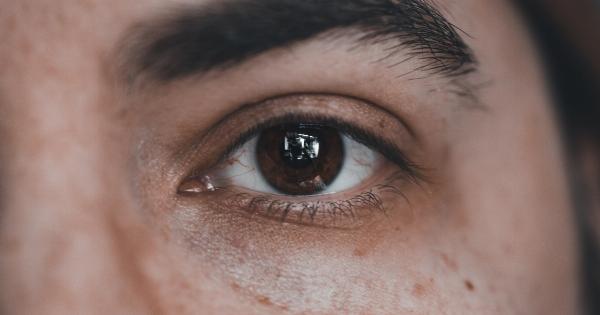When it comes to alcohol consumption, we often think of the physical and emotional impact it can have on our bodies. However, a recent study shows that the eyes can also reveal patterns of alcohol use and abuse.
The Study Background
The study was conducted by researchers from the University of California, Los Angeles and was published in the journal Alcoholism: Clinical and Experimental Research.
The researchers used a technology called pupillometry, which measures changes in the size of the pupil in response to different stimuli.
The Participants
The study involved 48 adult participants who had reported consuming alcohol regularly. The participants were divided into two groups: those who reported binge drinking at least once a week and those who did not report binge drinking.
The Findings
The findings of the study showed that there were significant differences in the pupillary response between the two groups.
Specifically, the group that reported binge drinking had a smaller initial pupillary response to alcohol cues compared to the non-binge drinking group.
What Does This Mean?
The smaller pupillary response in the binge drinking group suggests that they have built up a tolerance to the effects of alcohol.
This means that they need to consume more alcohol to achieve the same level of intoxication as someone who does not binge drink.
Implications for Treatment
The findings of this study have significant implications for the treatment of alcohol use disorder. Pupillometry could potentially be used as a diagnostic tool to identify individuals who have built up a tolerance to alcohol.
This could help healthcare providers to tailor treatment to the specific needs of each individual.
Other Applications of Pupillometry
While this study focused on alcohol use, pupillometry has been used in other areas as well. For example, it has been used to measure emotional responses, cognitive processing, and changes in attention.
It has also been used to diagnose neurological disorders such as Parkinson’s disease.
Limitations of the Study
While the findings of this study are significant, there are some limitations to consider. First, the study was small and only included participants who reported consuming alcohol regularly.
This means that the findings may not be generalizable to the population as a whole. Second, pupillometry is a relatively new technology and more research needs to be conducted to establish its reliability and validity in different contexts.
Conclusion
The study conducted by researchers from the University of California, Los Angeles has shown that pupillometry can be used as a diagnostic tool to identify individuals who have built up a tolerance to alcohol.
This has significant implications for the treatment of alcohol use disorder and could help healthcare providers to tailor treatment to the specific needs of each individual. Pupillometry has also been used in other areas and has the potential to be a valuable tool in a variety of contexts.






























